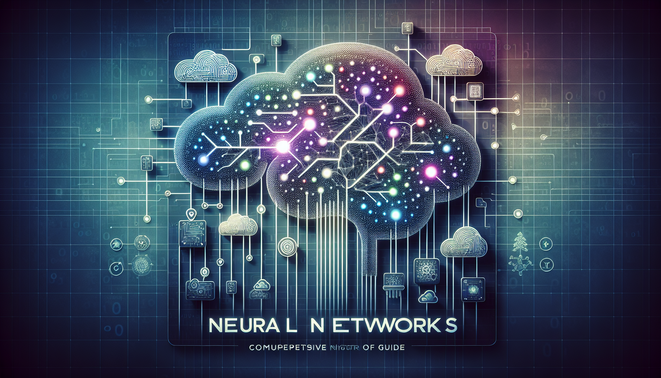Physical Address
304 North Cardinal St.
Dorchester Center, MA 02124
Physical Address
304 North Cardinal St.
Dorchester Center, MA 02124

Understanding Neural Networks in Cloud Computing: A Comprehensive Guide
Neural networks are integral to the future of artificial intelligence, providing machines the ability to perform tasks once thought exclusive to human intelligence. As cloud computing evolves, neural networks integrated into cloud platforms offer scalable solutions across various industries. This detailed guide explores neural networks’ basics, architectures, training techniques, and cloud-based applications for industry professionals.
Meta Summary
Discover how neural networks, inspired by the human brain, are reshaping industries by enhancing AI capabilities through cloud platforms. This comprehensive guide covers neural network architectures, training methodologies, and real-world applications, offering critical insights for professionals.
Introduction to Neural Networks
Neural networks are designed to mimic the human brain’s pattern recognition and decision-making processes using interconnected neurons. These adaptable models can learn from data inputs to execute tasks like image recognition and language processing.
Learning Objectives
Grasp Neural Networks’ Fundamentals: Comprehend how these networks model complex input-output relationships for tasks like image recognition.
Identify Key Network Components: Learn about neurons (nodes), network layers (input, hidden, output), weights, and biases.
Case Study: Neural Networks in Healthcare
A healthcare firm employs neural networks to analyze patient data, enhancing diagnostics and care. By identifying patterns in medical images and predicting outcomes, they improve treatment efficacy.
Exercises
Explore a Neural Network Application: Examine how industries like finance and automotive use neural networks.
Illustrate a Neural Network: Draw a basic neural network diagram with labeled layers.
Architecture of Neural Networks
Neural network architecture dictates neuron organization and connectivity, impacting the model’s function.
Learning Objectives
Differentiate Network Architectures: Explore the roles of feedforward, convolutional, and recurrent networks to choose appropriate models.
Role of Activation Functions: Discover how activation functions introduce non-linearity, helping networks to learn intricate patterns.
Case Study: Image Recognition Enhancement
A startup uses Convolutional Neural Networks (CNNs) to improve image processing capabilities, exploiting CNNs’ strength in spatial data analysis.
Exercises
Create a Network Architecture Chart: Compare various architectures’ strengths and weaknesses.
Build a Simple Feedforward Network: Use TensorFlow or PyTorch to create a basic model.
Best Practices
Begin Small and Scale: Start with simple networks for debugging and understanding.
Leverage Pre-trained Models: Use existing models to save training time and improve accuracy.
Deep Learning Fundamentals
Deep learning, a machine learning subset, focuses on using deep neural networks with multiple layers.
Learning Objectives
Understand Differences in Machine Learning: Compare traditional machine learning’s reliance on manual features with deep learning’s automatic feature learning.
Characteristics of Deep Learning Models: Learn about deep learning’s complexity and ability to develop hierarchical data representations.
Case Study: E-commerce Recommendations
An online retailer uses deep learning for product recommendations, analyzing user behavior to enhance customer experience and boost sales.
Exercises
Distinguish Between Machine Learning Types: Write an essay on deep learning vs. traditional machine learning.
Discuss Deep Learning Use Cases: Explore scenarios where deep learning excels, like natural language processing.
Best Practices
Prevent Overfitting: Employ techniques like dropout and L2 regularization to improve generalization.
Training Neural Networks
Training involves modifying neural network weights to optimize accuracy in predicting outcomes.
Learning Objectives
Elucidate Training and Backpropagation: Master backpropagation’s role in adjusting weights through error propagation.
Common Optimization Techniques: Learn about optimizers like gradient descent and RMSprop to streamline training.
Case Study: Enhanced Fraud Detection
A finance company uses backpropagation in fraud detection, continuously training their model with updated data to prevent financial losses.
Exercises
Simulate Neural Network Training: Visualize learning with simple datasets in Jupyter Notebook.
Experiment with Optimization: Compare optimization techniques’ effects on a dataset.
Pitfalls
Data Quality and Preprocessing: Inaccurate models stem from poor data quality.
Avoid Overfitting: Ensure model generalization with cross-validation.
Applications of Neural Networks on Cloud Platforms
Utilizing cloud platforms for neural networks allows businesses to scale efficiently and cost-effectively.
Learning Objectives
Explore Business Applications: Neural networks are crucial in areas like sentiment analysis and predictive maintenance.
Benefits of Cloud Deployments: Cloud platforms offer scalability, flexibility, and resource access.
Case Study: Cloud-Based Inventory Optimization
A retailer uses AWS to manage inventories, leveraging neural networks for sales data analysis and demand prediction to streamline supply chains.
Exercises
Deploy a Neural Network on the Cloud: Implement models on Azure or Google Cloud to gain practical insights.
Evaluate Cloud Network Performance: Analyze latency, cost, and scalability.
Best Practices
Utilize Cloud Service Providers: CSPs like AWS and Google Cloud provide robust platforms for deploying and managing networks.
Visual Aid Suggestions
Neural Network Diagram: Visualize neural network components and layers.
Architecture Comparison: Diagramming feedforward, convolutional, and recurrent networks.
Key Takeaways
Neural Networks’ Power: Representing human brain-inspired tools, they excel in pattern recognition and decision-making.
Specific Architectures for Specific Tasks: CNNs and RNNs suit diverse needs.
Deep Learning’s Depth and Complexity: Outperforms traditional learning in certain tasks.
Training for Accuracy: Use backpropagation and optimizers to enhance models.
Cloud Offers Scalable Solutions: Enhance business capabilities with cloud-deployed networks.
Glossary
Neural Network: A brain-inspired model for pattern recognition.
Deep Learning: Machine learning involving multilayered networks.
Activation Function: Introduces non-linearity in nodes.
Backpropagation: Weight adjustment algorithm based on error rates.
Convolutional Neural Network (CNN): Excellent for image processing.
Cloud Service Provider (CSP): Offers cloud computing resources.
Knowledge Check
What sets deep learning apart from traditional machine learning?
a) Manual feature extraction
b) Automatic feature learning
c) Simplicity of model
d) Use of decision trees
What is the role of activation functions in a neural network?
What are some advantages of deploying neural networks on cloud platforms?
Further Reading
The Deep Learning Book
Understanding Neural Networks by Towards Data Science
IBM Cloud Learn: Deep Learning